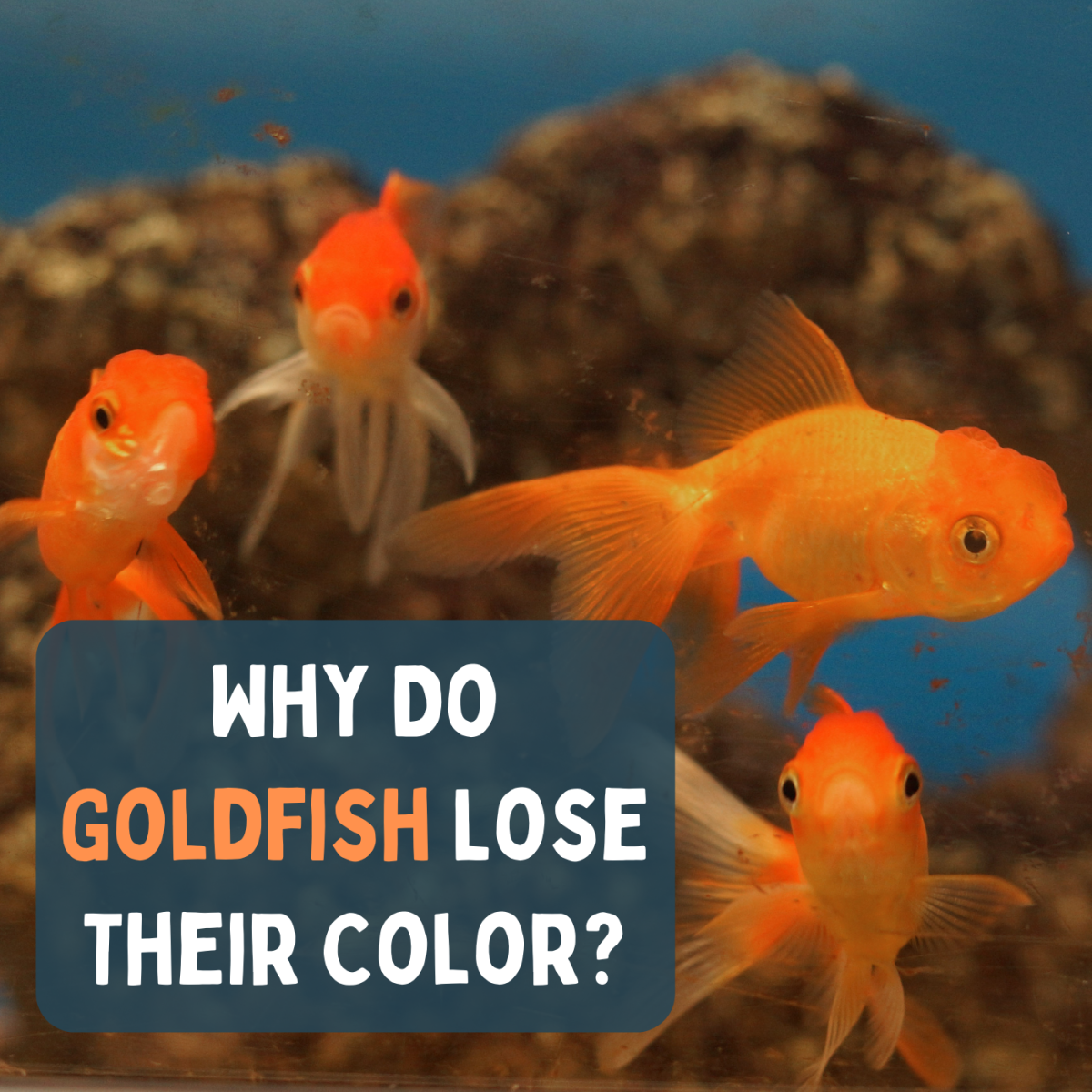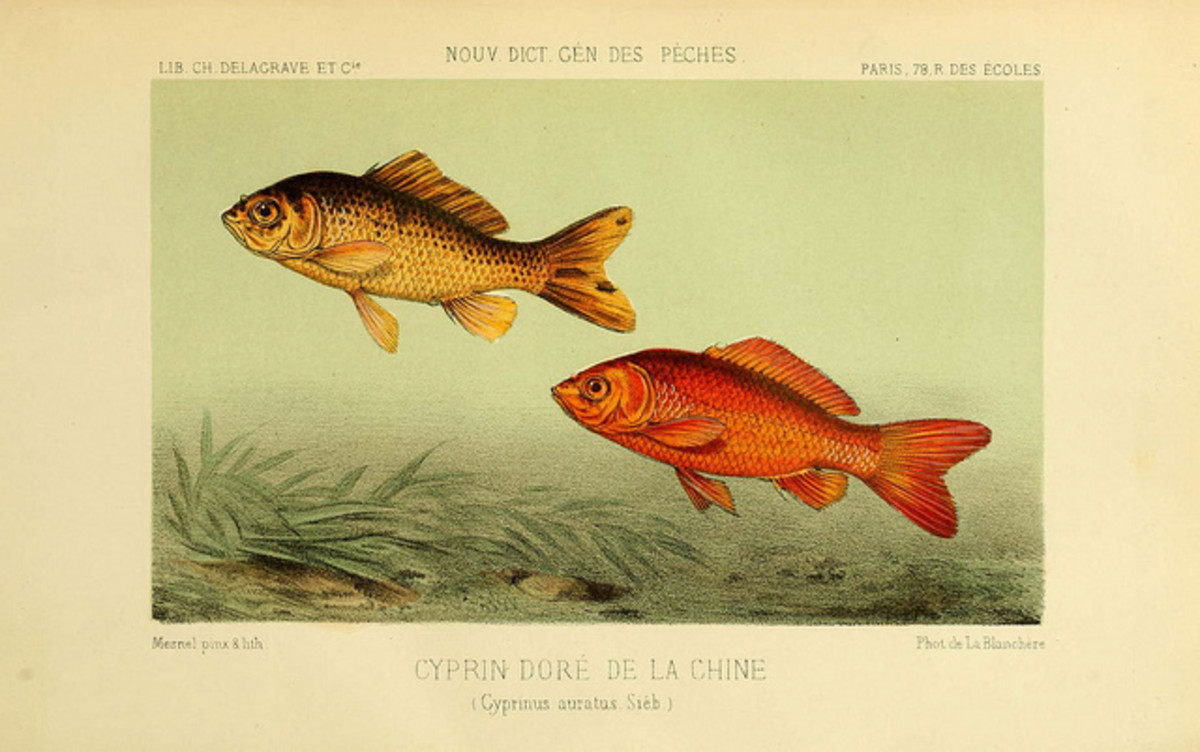
The type of goldfish you have are called comets. Plenty of light means plenty of color for goldfish.

Fish sometimes turn colors due to their surroundings around them too.
Goldfish turning brown. Do goldfish start out brown. Most goldfish start off as brown or black due to possessing melanophores or specialized cells that contain melanin biological pigment within the dermal layer of their scales. As they mature goldfish will generally change to their characteristic orange or yellow coloring within about a year.
Lack of exposure to light is a common reason why orange fish turn brown. Plenty of light means plenty of color for goldfish. Fish keepers recommend goldfish get 12 hours of light and 12 hours of darkness per day.
If fish are kept in an outdoor pond this will happen naturally. If your goldfish plant is turning brown due to too much calcium in the soil you may be able to fix this by watering with lime-free water. If your goldfish plant turns brown and has yellow leaves this could be because there is too little nitrogen in its soil.
Most goldfish start off as brown or black due to possessing melanophores or specialized cells that contain melanin biological pigment within the dermal layer of their scales. This darker coloring it is theorized helps young goldfish survive by being able to blend in when hiding and escape the attention of predators. Answer 1 of 3.
The type of goldfish you have are called comets. Goldfish are actually a type of carp and do tend to change color slightly as they get older or to blend in with their surroundings. Those that are in my feeder Pond outside all went in.
With goldfish color development its important to understand what happens with goldfish fry ie. When they are very young they have a color similar to their wild ancestors a greenishbrownish sort of color. Before goldfish get their brighter more desirable coloration they go through a period of demelanization.
When an aquarium lacks oxygen and your plant has to compete for oxygen in the water with your inhabitants it will lead to poor growth. This develops into the plant displaying brown and decaying leaves. Your plant will then remain with brown leaves until oxygen is added to the water at appropriate levels.
Velvet in goldfish is caused by the presence of a parasite called dinoflagellate and causes the scales and body of the fish to take on a rough dusty and slimy look that vaguely resembles the texture of velvet fabric. Read this article to to learn more. If you have owned a fish tank you are probably familiar with the dreaded brown film that can quickly take over its interior.
This film is known as Silica Algae or Brown Algae and it begins as brown patches on the gravel or glass of the tank. Once established it can rapidly coat most surfaces of the aquarium with a thin dark brown coating. It is completely normal for Blackmoor goldfish to turn colors like orange or gold.
Fish sometimes turn colors due to their surroundings around them too. Gravel color background color and amount of UV light. Try to give your fish some sunlight at-least once a week with an open window or a bucket sunbath.
Goldfish poop should generally look like whatever your goldfish has been eating. For example if you feed your goldfish a diet which is high in meat then theyre poop will be more pinkish in color. If theyve been eating a lot of vegetation it will be green and if theyve been eating a lot of flakes and pellets it will be redbrown.
Goldfish plants do well in warm conditions but they are sensitive to heat and cold. Keep your plant in a temperature-controlled area so that it doesnt get too hot or cold. Now I only have my brown goldfish left.
Recently it has been getting pale in most places except for a few brown splotches. I originally thought it wasnt getting enough sunlight but now its head is turning pale pink. All tests on the tank water came back normal.
Brown algae isnt as forgiving to your fishs environment. If you notice brown algae coating your plants or coral dont leave it sitting too long. While brown algae wont kill your plants and corals just by coating it it will compete for nutrients and block out sunlight which can result in death of your beloved aquarium plants.
You might notice a goldfish plant suddenly changing color and wilting away or leaves turning brown. This usually means that your goldfish is struggling to fight off an unseen disease. If you water isnt clean enough for goldfish plants see Plant Care section it can lead to goldfish plant diseases like rot.
Some fungal and bacterial infections may alter a goldfishs color. If you notice growths on your fishs fins or if your fish stops eating or suddenly changes color consult a veterinarian or fish expert. Genetics also affect color and goldfish with dark-colored parents are more likely to have darker colors.
Goldfish will occasionally start changing colors which can include producing more melanin or dark coloring to match their surroundings. Your fish may develop black markings if its surrounded by a lot of dark rocks foliage or other tank decorations or if the aquarium is near a dark-colored wall. The goldfish is naturally undergoing color changes due to its genetics which is usually unlikely.
If your goldfish is from a bad home or was rescued under questionable conditions they could have lost their color due to stress and are not regaining it with their strength. Another sign that your goldfish plant is not being cared for properly is if the leaves are turning brown. Brown leaves could either be from overwatering or too much direct sunlight burning the leaves of your goldfish plant.
The last common problem is legginesswhen the plant has too much space in its current pot. The goldfishs name comes from the bright gold color that goldfish first developed. Goldfish today are seen in orange white yellow blue-gray brown and black.
Some goldfish come in multiple colors almost resembling patterns like calico cats. Your goldfish may naturally be predisposed to black color variations. Brown or black flat spots and patches on goldfish are a sign of ammonia burn from spiking ammonia levels.
The discoloration is a sign of healing but elevated ammonia levels can kill fish. Small distinct raised brown or black spots.